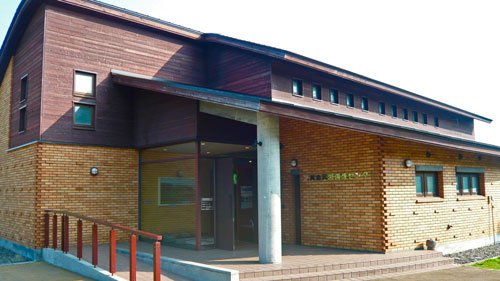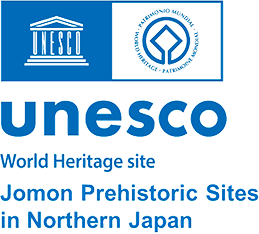

Date City Disaster Prevention Center
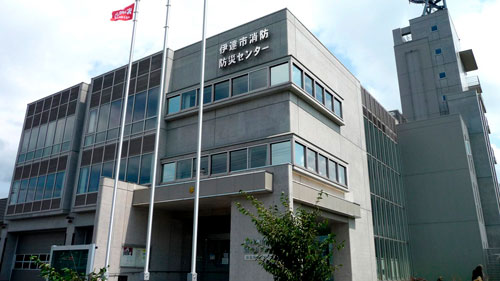
The centre was created after the 2000 eruption to provide information regarding the volcanic activity and mitigation policy of Mt. Usu as well as raising the awareness on mitigation for local residents and tourists. The facility provides an educational opportunity for children and local residents to learn about volcanoes and mitigation. The centre is designed to be used as the Head Quarter Office when necessary, such as an intensification in volcanic activities.

Date City Museum of History and Culture
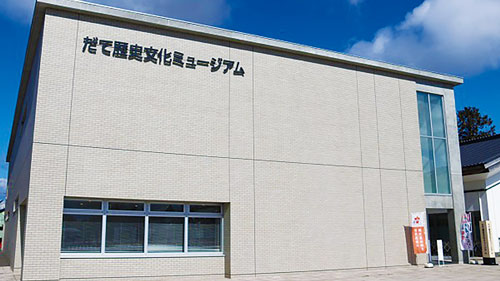
Date City’s history includes Jomon culture, Ainu culture and the samurai culture that was brought to the area by the Watari Date family in the Sendai Domain. In any age, there were interactions with people in the north and south, and the city experienced different cultures. The Date City Museum of History and Culture provides an opportunity to learn the history of Date City and consider the significance of cultural diversity and efforts for a multi-cultural society beyond gender and positional differences.
(Written in Japanese)

Usu Zenkoji Treasure Museum
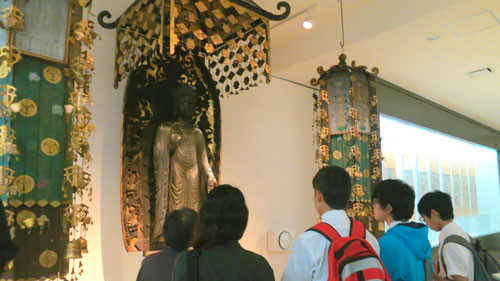
The Usu Zenkoji treasure house is within Usu Zenkoji Temple, and holds on display over 200 valuable items, such as statues of the Shaka-Nyorai Buddha and Enku which have been designated as Hokkaido cultural assets, as well as a part of the Buddhist scriptures donated by the Tokugawa Shogunate. It tells the complete history of Usu Zenkoki Temple.

Sobetsu Information Center “i”
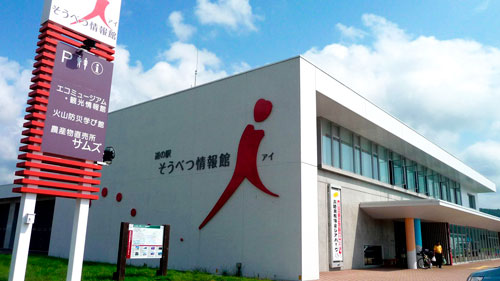
Sobetsu Information Center i is a place where people can learn about volcanoes. As well as this, the majestic Usu-san and Showa-Shinsan can be seen up close from the building, and this combined with a beautiful landscape of fields have made it a popular place where people can relax together. In addition, as a disaster prevention chamber for cases of emergency such as imminent volcanic activity, it has been designed with a command adjustment feature.
2F:Volcanic disaster prevention learning

Sobetsu Local History Museum
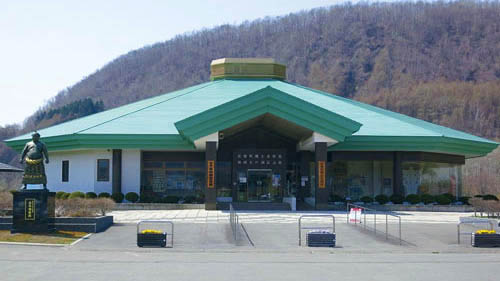
Date City’s history includes Jomon culture, Ainu culture and the samurai culture that was brought to the area by the Watari Date family in the Sendai Domain. In any age, there were interactions with people in the north and south, and the city experienced different cultures. The Date City Museum of History and Culture provides an opportunity to learn the history of Date City and consider the significance of cultural diversity and efforts for a multi-cultural society beyond gender and positional differences.

Mimatsu Masao Memorial Museum
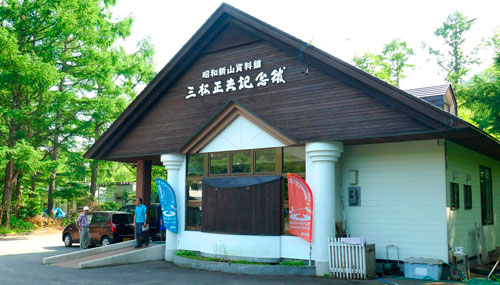
During the difficult times of the Second World War, Masao Mimatsu, local postmaster, monitored the eruption of the Usu volcano. Mimatsu helped Hokkaido University’s Professor Omori with observations during the 1910 eruption, and through detailed observations of volcanic activity during the 1943-45 eruption, sketching the growth of lava dome and then summarizing it in a table, left a large amount of excellent records. This observation table is known as the “Mimatsu Diagram” and received the praise of the world’s volcanologists when presented at the 1948 International Association of Volcanology Conference. The Mimatsu Masao Memorial Hall was established at the foot of Mt. Showa-Shinzan with the goal of not only saving the achievements of Mimatsu who saw Mt. Usu erupt three times in his life for posterity, but also to preserve the fundamental materials of Japanese Volcanology.

Irie / Takasago Shell Mound Museum
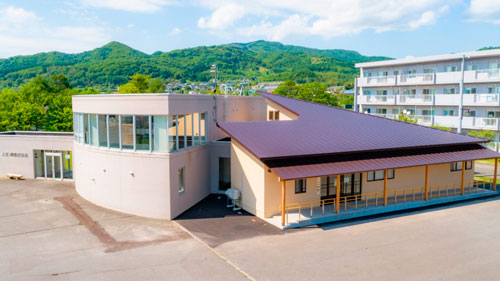
Approximately 200 exhibits of relics excavated mainly from Irie/Takasago. Many exhibits including accessry made of tooth of wild pig living in Honshu, fishing tool made of deer and ceramics. Can be visited together with the Irie Shell Mound Park, which is just a five minute walk away.

Toyako Visitor Center / Volcano Science Museum
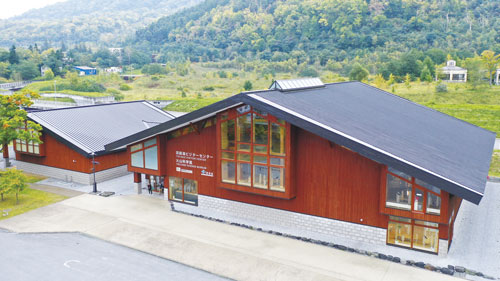
The Toyako Visitor Center provides and displays the information required for visitors to enjoy the nature of Toyako at the Shikotsu-Toya National Park. The center also features informative exhibits on the nature surrounding Lake Toya, the eruption history of Mt. Usu, and the plants and animals that live in the surrounding area. A high-density video can also be seen which introduces the nature of the four seasons of Lake Toya. In addition, guidance is given such as on information about nature watching around Lake Toya. The Volcano Science Museum allows visitors to learn by feeling the vibration of the powerful three-surface multi-vision of the eruption of Mt. Usu, and through the videos, panels, and real models. It introduces the visitor to the history of the eruptions of Mt. Usu, through to the indications and scale of the 2000 eruption, the damage it caused, and the reconstruction work in response to it.

Nakajima-Mizuumi no Mori Museum
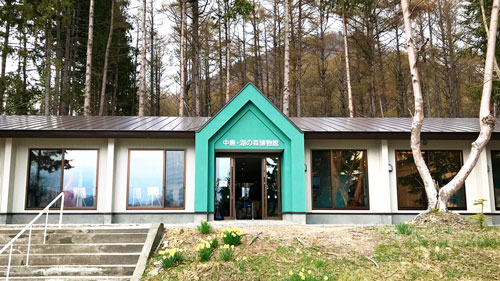
The Nakajima-Mizuumi no Mori Museum is adjacent to Nakajima Pier and has displays on the forest and wildlife surrounding Lake Toya.

Takarada Visitor Center
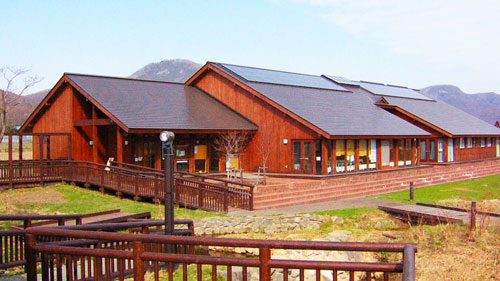
An experience learning facility by the Ministry of the Environment. Offers a variety of experience programs as well as guidance on the region’s nature for both locals and visitors to Lake Toya. Help is also provided through “Environment Learning” which aims to give knowledge of local nature and the regional environment.
(Written in Japanese)

Toyako Museum of Art
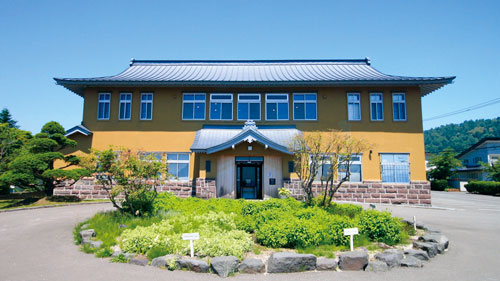
The renovated building was formerly the old Toya city hall building and is located in front of Toyako. Exhibits include the works of sculpture Sunazawa Bikky which are Hokkaido symbols, works from the “Toya International Sculpture Biennale” small sculpture competition, a limited book collection of first editions from recent and contemporary Japanese literature, as well as photos by Banri Namikawa who served as chief photographer for the UNESCO World Heritage Site.
(Written in Japanese)

Mizuumi Town Library
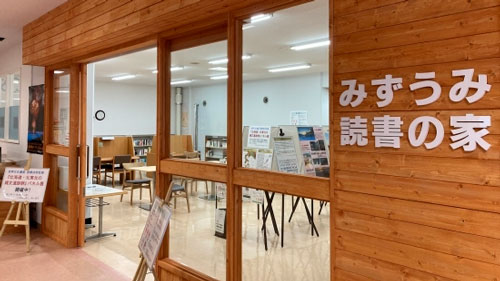
The Mizuumi Town Library, alongside its role as the community library for Toyako Town, it also holds a number of maps, brochures, and publications related to volcanoes which have been produced in collaboration with volcanic researchers. They have made use of the library’s location in a tourist destination in the vicinity of the volcano crater to conduct their research. The library is open to tourists.
(Written in Japanese)

Showa-shinzan Park Service Center
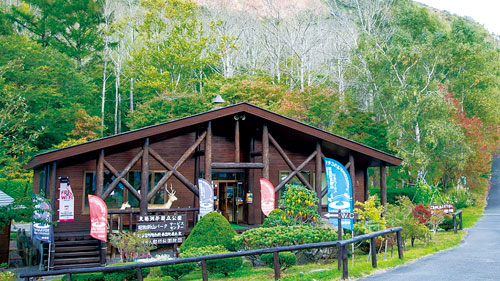
A Ministry of the Environment facility which exhibits dioramas, etc. of Mt. Usu and Mt. Showa-Shinzan. As well as an abundance of video exhibits which explain the natural surroundings, the facility also provides tourist information around Lake Toya.
(Written in Japanese)

Mt.Usu Ropeway
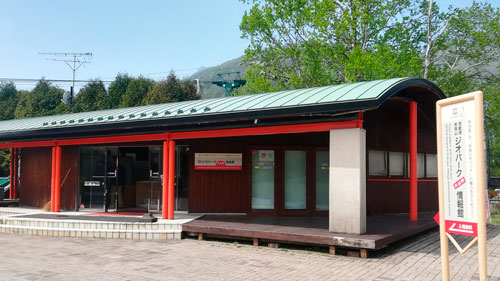
Volcano Village Information Center
The Volcano Village Information Center is located at the ropeway station at the foot of Mt. Usu. The geopark exhibition facilities there introduce the great activities of local residents and researchers into the site’s recognition as a world geopark, as well as the eruption history of Mt. Usu.
Disaster prevention summit Theater
The Mountaintop Disaster Prevention Theater at the summit station shows a video related to Usu Volcano disaster prevention.

Usu Arutori Coast Nature House
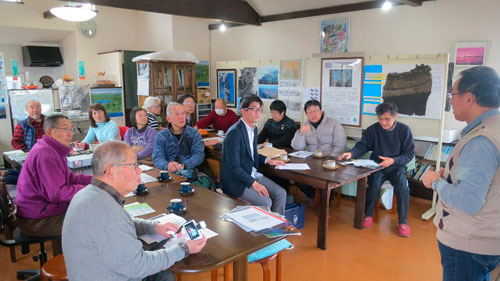
A private exhibition facility located at the lower slope of hummocky hill in Cape Arutori. Situated in a place which overlooks the southern foot of Mt. Usu and Usu Bay, this facility offers dioramas of Usu, specimens left by the 1640 tsunami deposit which caused the sector collapse of the Komagatake, and exhibits on the surrounding environment. In particular, there are many samples of shellfish.
Reservation Required:0142-38-2593

Exhibition of the UNESCO Global Geopark & Blessing of the Earth
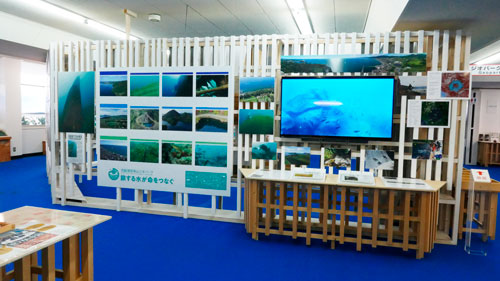
Toyako Town, which constitutes Toya-Usu UNESCO Global Geopark, has the Geoparks and Blessings of the Earth Exhibition on the third floor of the Tourist Information Center in Toyako Onsen to introduce the appeal of geoparks in Japan. In addition to rock samples and photos, the characteristics of the earth and its connection to local products are introduced.


